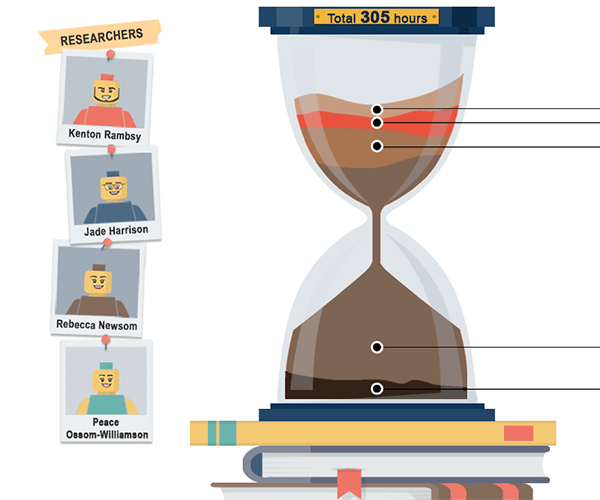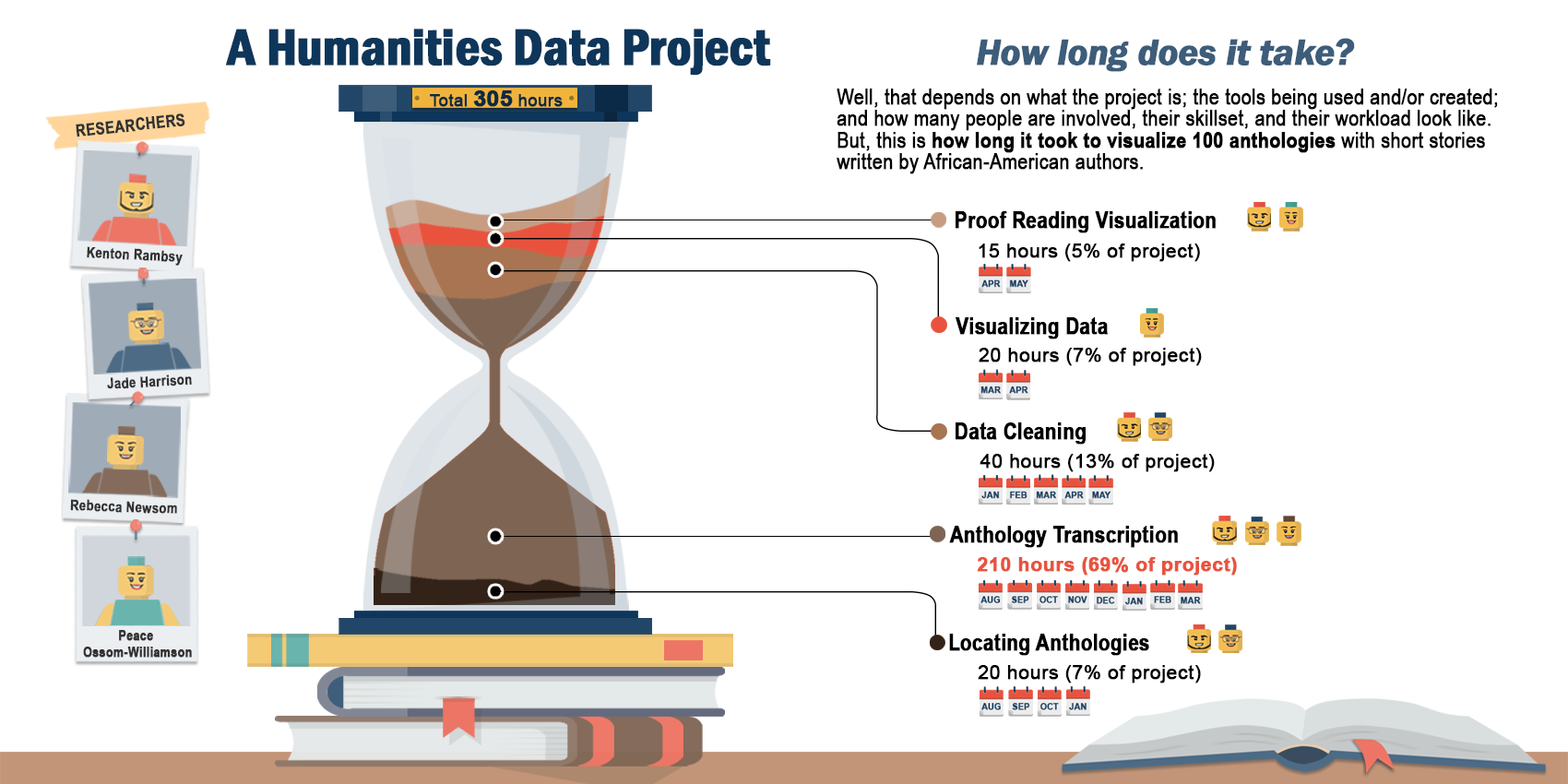
by Peace Ossom Williamson


by Peace Ossom Williamson
Have you ever seen a digital humanities project that interested you, but you didn’t know what it took to create it? Many people often underestimate the amount of time and effort behind this work. In this week's #vizoftheweek, Dr. Kenton Rambsy, Assistant Professor of African American Literature and Digital Humanities, provides insight using the Black Anthology Project to highlight what it can take, breaking down the steps taken in a humanities metadata project, the team members involved, and more:
Even though the field of digital humanities (DH) has emerged over the past decade as a new and exciting field in the academy, I oftentimes notice that there is very little discussion about how much time it takes to produce a project. Working on the Black Anthology Project over the 2017 - 2018 school year made this fact painstakingly clear to me: Digital projects are labor-intensive.
In August 2017, I was awarded an iLASR grant from The University of Texas at Arlington College of Liberal Arts for my project, The Black Anthology Project. From that, we developed The Big 7 interactive dashboard. What The Big 7 dashboard doesn’t show, though, is the hours of labor that went into producing a short and concise document.
Since there is a tendency to downplay human contributions to digital projects, we decided to study and visualize the process in a meta-visualization of labor. This particular project took a total of 305 hours over 10 months, and a total of four people performed an assortment of tasks that contributed to its completion. Kukhyoung Kim, graduate research associate in UTA Libraries Research Data Services department, transformed hourly logs of this project into a visualization.
Over a nine-month period, I worked closely with two research assistants—Jade Harrison and Rebecca Newsome—to transcribe and code over 100 anthologies’ Tables of Contents and create page-level metadata to track the circulation of black texts in anthologies. Admittedly, this project was more time-consuming and labor-intensive than I originally assumed.
I initially thought I might use OCR software to transcribe the data, but I quickly realized that process was not a feasible option. Many Tables of Contents are arranged for an aesthetic appeal with different typefaces. After using OCR on a few anthologies, we had to spend a considerable amount of time editing and re-typing sections of texts in order to enter the information into the spreadsheets. After about 2 weeks, my research assistants and I found it much more efficient to transcribe the documents by hand.
From October 2017 to March 2018, we transcribed 100 TOCs, and, at the beginning of March, we started cleaning and organizing the massive amount of data in .csv files. We also started adding additional data to the information we transcribed from the TOCs, such as author birth years, author gender, the original publication date of entry, and other useful descriptive metadata.
As a way to make my research accessible to all, I worked with Peace Ossom-Williamson, to create an interactive dashboard for quickly assessing and asking questions of the data. Together, we transformed The Black Short Story Dataset, into an interactive dashboard that visualizes the most frequently republished black short stories from 1925 - 2017. The visualization highlights the seven most frequently anthologized short story writers or The Big 7. We worked together to conceptualize visualizations that she then put together in Tableau and published interatively to Tableau Public. I shared the dashboard with various colleagues who provided feedback. The feedback received plus my repeated reviews of the dashboard allowed us insight into how users were interacting with it and we made corrections and incorporated recommended changes.

Image Creator: Kukhyoung Kim. Copyright: Creative Commons Attribution 4.0 International (CC BY 4.0)
In contrast with most traditional forms of scholarship, digital approaches are collaborative. The collaboration and labor aspect of DH is sometimes downplayed. I could see how one could get the impression that digital projects are produced from start to finish on computers. However, most of my projects take a considerable amount of time to complete because assembling datasets is like a scavenger hunt of sorts. I draw on multiple online datasets and transcribe non-digitized sources in order to create an extensive record of the publishing histories of black writers. DH research takes an extraordinary amount of labor weather it be collecting data from various sites, cleaning the information and organizing it in a data content system, interpreting the data, and actually presenting your work to a larger audience.
Add new comment